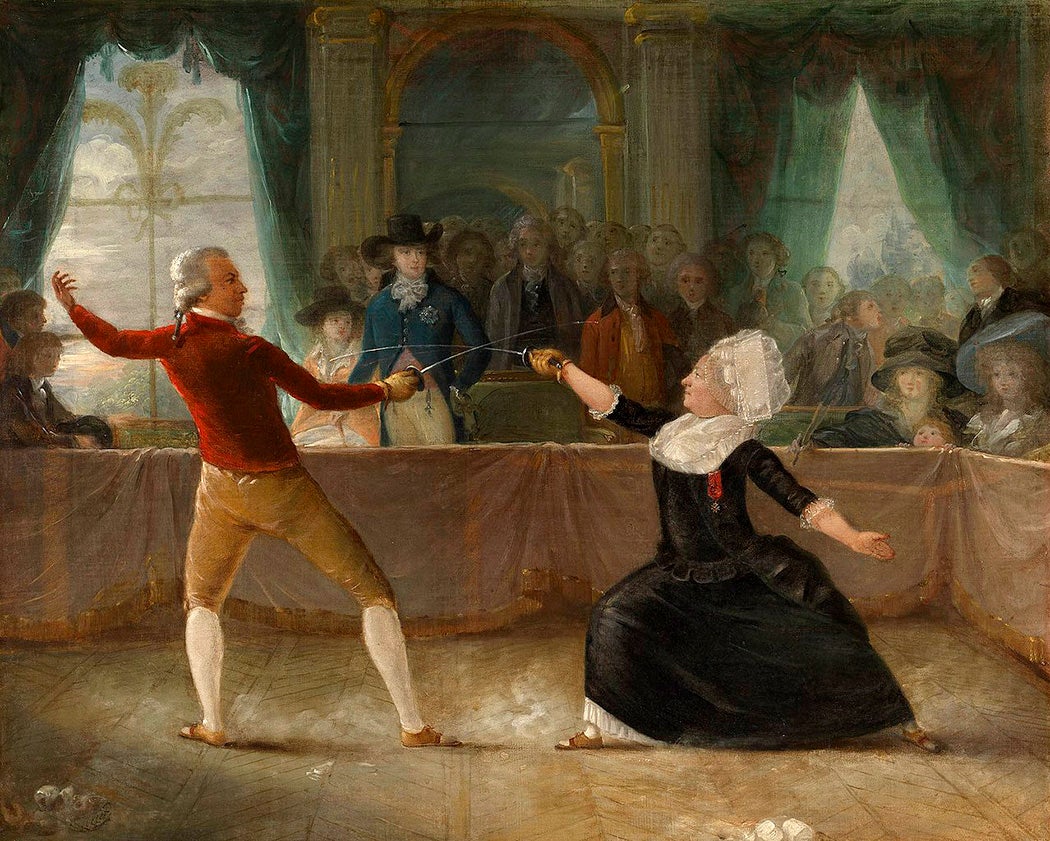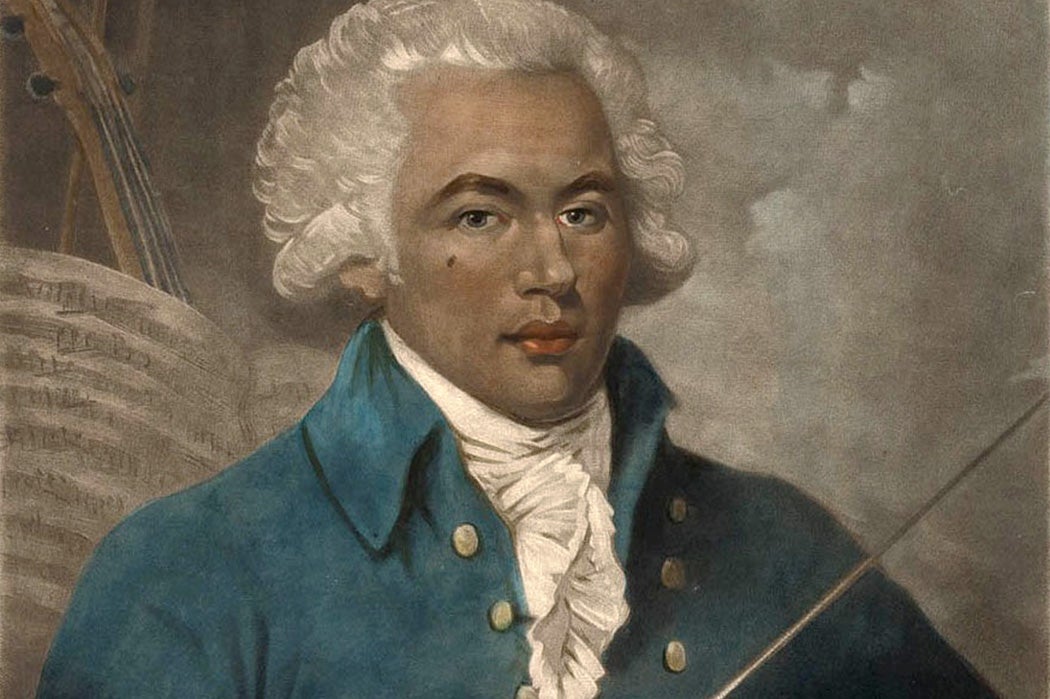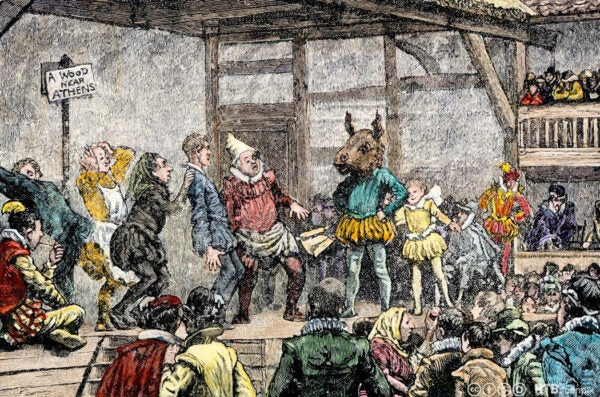If there was one instrument eighteenth-century Parisians loved, it was the violin. As writer and violinist Gabriel Banat points out, “Parisians considered it the most perfect of all the instruments.” They wanted to hear it all the time, and the demand for violin music meant that there were a lot of people getting really good at playing. At first, many of these players were, like the violin itself, of Italian origin, but as the love of the instrument grew, so did the talent in France. Some of these names are lost to history, some barely whispers today. Others, Banat explains, “stand out as pioneers of new form.” But one man stood out, not only because of his music, but because of his very being.
As a person of color, Joseph Bologne, Chevalier de Saint-Georges, was unlike many of his peers. He was born in 1745 on the island of Guadeloupe, the son of a plantation owner and an enslaved woman. Because of the laws of the time, known as the Code Noir, he had the same status as his mother—enslaved. This was a difficult life with “harsh treatment meted out by persons who looked like his father upon persons who looked like his Mother,” as French studies scholar Julian A. Ledford notes. But at some point, because he was his father’s only son, his father took an interest in him and insisted that he “receive an aristocratic education, excelling in weaponry (fencing) and courtly music (the violin),” Ledford explains. He’d get that education in France, and he would excel at both fields. According to a 1919 essay by Lionel de La Laurencie, Joseph also “acquired great superiority, […] as a marksman, skater, equestrian and dancer as well.” By the time he graduated from a private fencing academy in 1766, Bologne had been tapped as a chevalier (knight), an honor to which he attached the name of his father’s plantation, Saint-Georges.

Though La Laurencie notes that Bologne “led a gay, worldly life […] [he] spent without count, and thrust himself feverishly into the Parisian social whirlpool, awakening in women a mixture of sympathetic curiosity and haughty reserve,” that didn’t tell the whole story. French laws at the time made life difficult for a Black man. Bologne was under constant threat of deportation. He survived two attempts on his life, lost jobs because of his race, and found his relationship with one woman was “impossible because of laws that targeted persons of Black skin in Paris,” Ledford writes.
Despite these hardships, Bologne was able to create. As Banat explains, he was most known for his symphonie concertante, “a cross between the baroque concerto grosso and the instrumental solo concerto, […] offering not one but two or more soloists ‘competing’ with each other as well as with the orchestra.” He joined the orchestra of the Concert des Amateurs in 1769, and when the group’s founder left a few years later, he assumed directorial duties. As reported at the time, under his leadership, it was “the best orchestra for the Symphonies there is in Paris, and perhaps, Europe.”
Weekly Newsletter
During this time, Bologne was also composing prolifically, with two sets of string quartets, twelve violin concertos, and ten symphonies concertantes written between 1771 and 1779. But his race was always a factor. In 1776, he was close to becoming the co-director of the Paris Opera. But, as Banat describes, after a petition to the Queen by several performers expressing “their honor and the delicate nature of their conscience, could never allow them to submit to the orders of a mulatto,” he was rejected.
If his life sounds a bit like a novel today, well, it did in his lifetime, too. A fictionalized account of his life was written by Roger de Beauvoir in 1840, and while it made his adventurous life sound romantic, over the years fact and fiction began to blur. The real man lost a little bit more with each passing decade. In recent years, his story has been rediscovered, but he has often been positioned as the “Black Mozart,” rather than as a person with his own unique story. As Ledford writes, Saint-Georges is due the “full merit of his name, his work, his lived experiences, his talent, and their combined effect to create his truly unique musical expression.”
Teaching Tips
Listen to and analyze Bologne’s music: Watch Maya Iwabuchi perform his Violin Concerto in A Major with the Royal Scottish National Orchestra perform and the Rogue Valley Symphony perform his Symphony No. 1 in G Major. Numerous scores are available via the International Music Score Library Project. Christopher Dingle of the Royal Birmingham Conservatoire has shared a BBC interview in which he discusses the challenges of editing Bologne’s music in the twenty-first century.
Support JSTOR Daily! Join our membership program on Patreon today.







